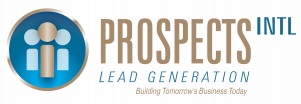
5 Steps to Sales Success-Step 2 Establish Rapport
This is a fancy way of saying “make a friend.” It is critical to get a prospect to like and trust you BEFORE you start the fact finding. At every juncture of your prospecting, remember this old Teddy Roosevelt saying: “Nobody cares what you know until they know that you care.” Here is one of my favorite self-coined sayings: “The company with the most friends wins!” Getting the barriers of mistrust to come down is one of the oldest, most significant challenges known to sales-dom; always has been and it still is. In our digital age, we may send many emails to gain someone’s confidence before they are willing to share their phone number with us. We send many texts before they are willing to speak to us “live”, and we may need to employ “D”, all of the above, before we talk them onto the showroom floor. But these two items, establishing credibility first and then the rapport before you launch into a fact finding, cannot be stated strongly enough. They are more important than any promotion or product knowledge you may be able to impart.
In the early years of my marriage, my wife used to think that I didn’t “get down to business” fast enough. She was thinking about the economy of the time I was investing, but later came to realize that my small talk and friend-making created a closing ratio that was much more time-saving than burning through relationships because prospects weren’t quite ready to buy from someone they fully trusted. My pipeline became full of friends who bought at a slightly slower pace but much higher closing rate, at higher margins, than my competitors. The moral of this paragraph? By going too fast, you can really slow down your sales production.
Some of the very, very best sales pros I’ve ever known seemed to sell effortlessly, although they were very intentional in working on relationship-selling and purposely slowing things down on the front end, so they could get to the end game faster… make sense? The summary is simple – time spent NOT on product but on people is the very most valuable time you can spend in the sales process.
There is no airtight amount of time anyone can give you to spend on “making a friend” so that you will know you can check that box. Every prospect is different and some will warm up to you slower than others. Event sales professionals have learned how to speed up the process but be assured they know they can’t eliminate it without screwing up their closing ratio. The credibility of an event or a company, and the ability to make friends without acting desperate for a sale is a recipe for success. Some will only allow you to slow down the sales process so much so you must adjust your pace to fit the personality and availability of the prospects. Being able to condense and execute steps one and two but not forge ahead before accomplishing these things is critical to achieving your best closing ratio.
I’ll end with a word picture: Pretend you are a commercial painter contracted to paint an old historic mansion. It is a large and prestigious job awarded you because the building has historical value and the people in charge of getting it refurbished chose you because your resume included doing some impressive projects. Your reputation allowed them to believe that you could be trusted to get the job done right and on time. Examine the steps you need to take to get to the point where you can do the fun step of getting out the paint brushes and rollers to see the transformation you make to the structure by applying the paint. Some sheet rock (southernese for drywall) needs to be replaced because it is warped and not paintable. After taking the old sheet rock out and replacing it, it needs to be nailed into place, the nails set, mud and taped, remudded as needed, sanded and primed before being ready for paint. Even if you are a master painter and don’t need to mask because you can pull a straight line, you still need to do all the prep work to the old walls and ceiling so your paint job will look as good as possible. The fact remains that no matter how good you are at any given task, the preparation for said task has everything to do with the outcome. The fun part, the painting, is the same as the fourth step in the piano sales process, the recommendations. It can only be done to your highest standards if the previous steps are executed properly. The selling and making sure you recommend the right instrument to suit the prospects needs is the fun part but can’t be done out of sequence without hazarding the outcome.
Patience and discipline will serve you well as you position yourself properly with each prospect and put yourself in a position of the highest probability of successful selling. Bottom line: the prospect will determine the pace but you must redirect when possible and determine the order of the topics discussed. The best way to do that is to acknowledge the question then redirect by asking one. Say for instance the typical occurrence takes place where the prospect wants to bottomline dive and talk price randomly about this piano then that one, jumping around and just trolling for prices. You can successfully redirect by acknowledging their topic, then changing the topic to be in line with the proper sequence of topics in the 5 Steps to Selling Success method. Here is an example: “Mr. Jones, I am happy to address all your questions about price and promise to save you money on whichever instrument you decide is your best choice, yet may I have permission to first ask a few brief questions in the spirit of serving you best and finding that right instrument?” The formula for taking control of the sequence and redirecting the topic is best addressed by first acknowledging the concern or curiosity and then asking permission to talk about X,Y, or Z.
Another example: If the prospect does have some internet knowledge and tries to commandeer the conversation and take control of the sales process by invoking the model and specs, your best friend is the ability to ask questions. Very seldom are they well versed enough to advise themselves accurately without the context of your expertise, so gently ask inquiries such as; “That is an interesting choice, what about that piano piqued your interest the most?” By getting the prospect to talk more you open up the possibilities of asking them if they are familiar with a “thus and such” which has some of the same characteristics or is similar and in that same price range. Quote me…internally digest this fact – QUESTIONS ARE THE ANSWER. They are the tool you need to get good at using to lead the prospect down the road to making the decision that is best for them with your expert input.
Before you take the quiz designed to be sure this material was covered, I want to recommend a book. “The Secrets of Question Based Selling” by Thomas Freese.* It is very pragmatic and promotes the value of when and how to ask questions for the best selling results. “The more you tell, the more you sell” theory of the past is antiquated. Buyers are more well informed than ever and they need first to be sold on the fact that your advice is valuable before they are sold anything else.
* I do not receive any commissions for book sales LOL.
- Don’t Be Color Blind - March 14, 2024
- LeadFlow Clients Add Locations in a Shrinking Industry - March 6, 2024
- Vanity Analytics are Not the Real World - February 21, 2024
